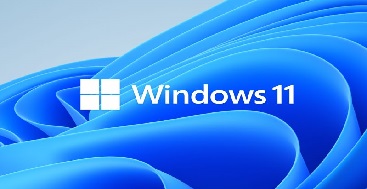Since the launch of Windows 11, there’s been a lot of talk about what it can and can’t do. Unfortunately, not all of it is accurate. In this article, we’re going to debunk seven of the most common myths about Windows 11. By the end, you’ll have a better understanding of the true capabilities of Microsoft’s latest operating system and why you should try it now.
Myth 1: Windows 11 is just a visual update
Sure, Windows 11 looks great with its new design, but it’s not just a pretty face. Under the hood, there are significant improvements in security, performance, and new features that Windows 10 didn’t have. Here are just a few:
- Smart recommendations in Start menu and File Explorer help you find files faster. You can mark favorite files and use File Explorer to keep your files organized.1
- Smart App Control provides a layer of security by only permitting apps with good reputations to be installed on your Windows 11 PC.2
- Seamless redocking ensures that when you connect your PC to an external display or monitor, Windows 11 remembers how you like things arranged when you leave, come back, and reconnect.3
Myth 2: You need a Microsoft account to use Windows 11
While having a Microsoft account can enhance your experience, you can still use Windows 11 with a local account if you prefer.
Myth 3: Older applications won’t run on Windows 11
Windows 11 is designed to be compatible with most Windows 10 apps. Microsoft has worked hard to help ensure that your existing software continues to work.
Myth 4: Windows 11 is not suitable for gaming
Windows 11 is great for gaming. It includes features like DirectStorage, which allows larger worlds with greater detail to load in less time. Plus, Auto HDR increases the range of colors both new and old games can produce. Available only on Windows 11, this new calibration app increases control of color on compatible displays.
Myth 5: You need the latest hardware to run Windows 11
You don’t need the newest hardware, but there are minimum requirements. Many PCs from the last few years will be able to run Windows 11 without any issues. Here’s an overview of how to find device specification requirements, versions, and languages available for Windows 11. You can also use the PC Health Check app to assess compatibility.
Myth 6: Windows 11 is difficult to use
If you’re familiar with Windows 10, you’ll find Windows 11 quite intuitive. The new interface is designed to be more user-friendly, not less. One cool new feature, Windows 11 can automatically wake up when you approach your device and lock when you leave it.6
Myth 7: Windows 11 doesn’t support touch input
Windows 11 supports touch input and even improves upon it with larger touch targets and better gesture recognition.7 It was designed to deliver a true mouse-less or keyboard-less experience.
Windows 11 is more than just a visual refresh; it’s a robust, secure, and user-friendly operating system that’s designed to meet the needs of today’s users.
End of support for Windows 10
It’s important to know that Microsoft will end support for Windows 10 on October 14, 2025. That means that Microsoft will no longer provide software updates from Windows Update, technical assistance, or security fixes for Windows 10. Transitioning to Windows 11 is essential for maintaining your access to the latest security features. Learn more.
DISCLAIMER: Features and functionality subject to change. Articles are written specifically for the United States market; features, functionality, and availability may vary by region.








